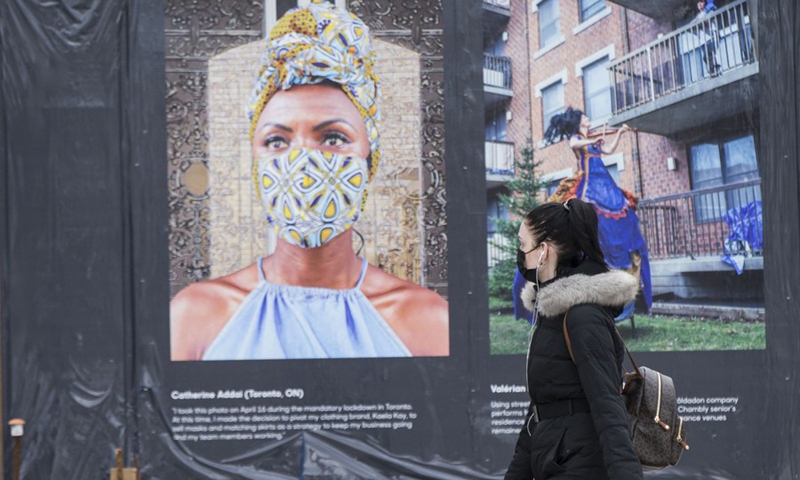
A woman wearing a face mask walks past pictures "Portraits in COVID Times" in Toronto, Canada, on Feb. 23, 2021.(Photo: Xinhua)
Canada detected 868 COVID-19 variant cases as of Tuesday, according to the Public Health Agency of Canada on Wednesday.
Out of the 868 cases, 827 were B.1.1.7 variants, 40 B.1.351 variants and one P.1. All provinces in the country have detected cases of variants of concern.
"Some variants are considered 'variants of concern' because they spread more easily, some may cause more severe illness, or current vaccines may be less effective against them," Theresa Tam, chief public health officer of Canada, said in a statement on Wednesday.
However, as variant cases increase, overall COVID-19 numbers have dropped steadily in Canada.
Tam said Canada continues to see a decline in COVID-19 activity, overall. "Currently, there are 30,677 active cases across the country. The latest national-level data show a seven-day average of 2,956 new cases daily (Feb. 17-23)."
As of Wednesday afternoon, Canada reported a cumulative total of 854,181 COVID-19 cases and 21,789 deaths, according to CTV.
Some parts of the country that have seen notable declines in cases have recently moved to reopen non-essential businesses and lift lockdowns in the face of fast-spreading variants, despite public health officials cautioning against doing so.
Much like the first and second waves of the COVID-19 pandemic in Canada, the situation varies greatly across the country for a number of different reasons ranging from geographic and demographic to political.
But even provinces and territories in the country that have had fewer COVID-19 cases are still at high risk of devastating outbreaks, overwhelmed health-care systems and severe outcomes for vulnerable populations if variants spread rapidly.
Tam said Newfoundland and Labrador province is a cautionary tale for the rest of Canada, where an outbreak of the B.1.1.7 variant led to a spike in new cases in the community during a time when public health measures were less stringent.
